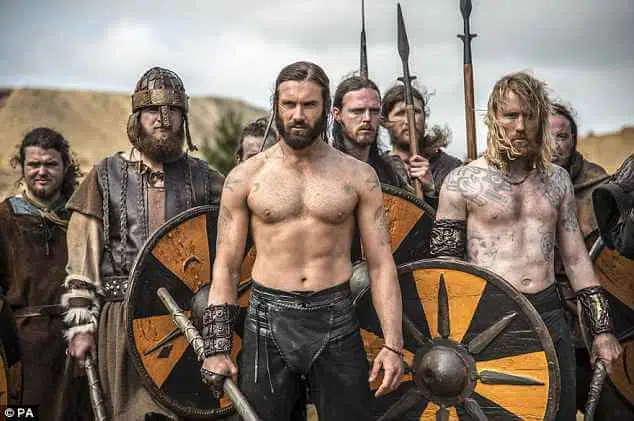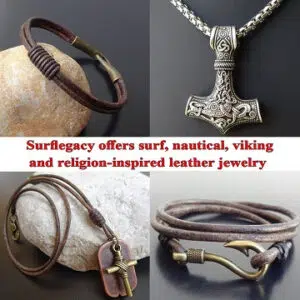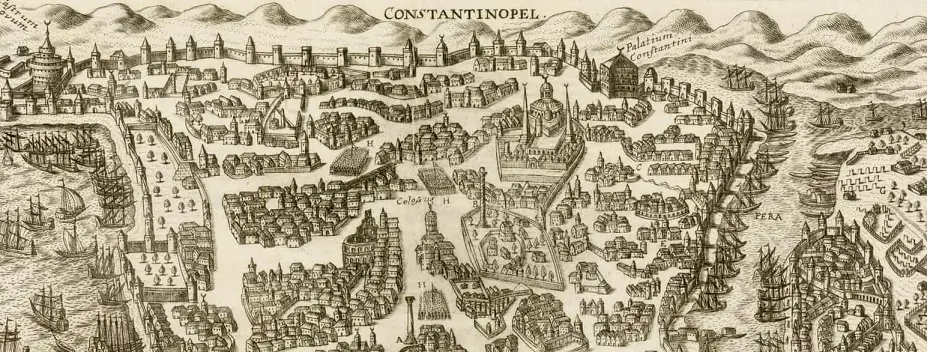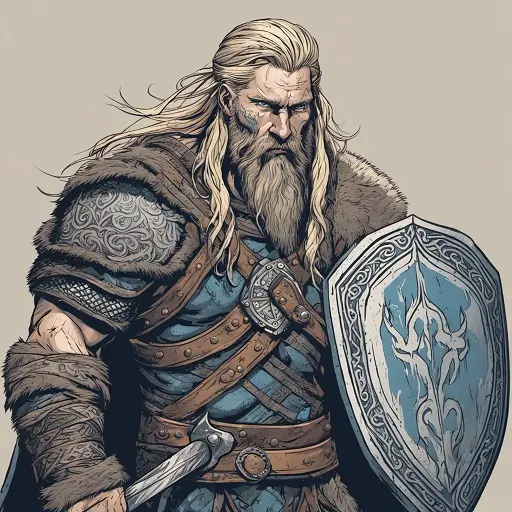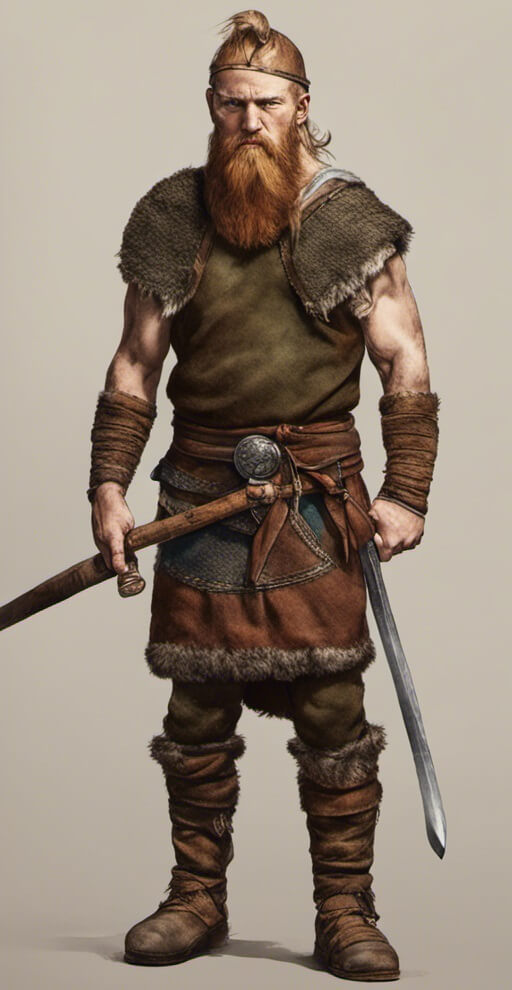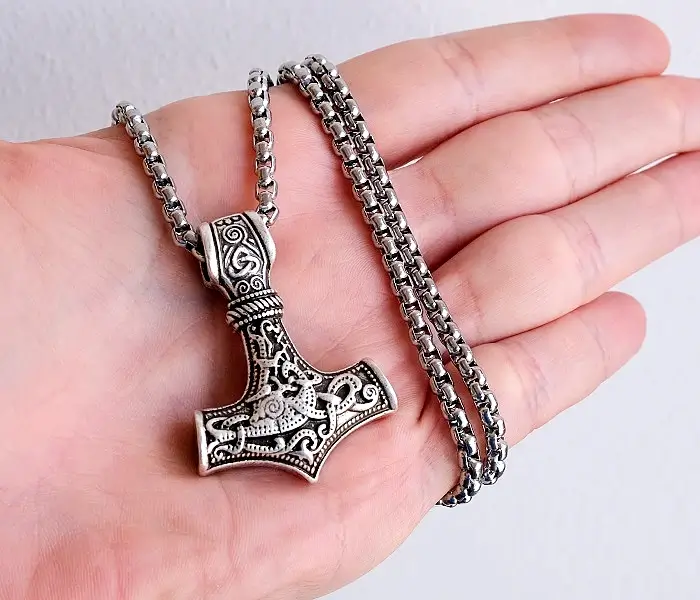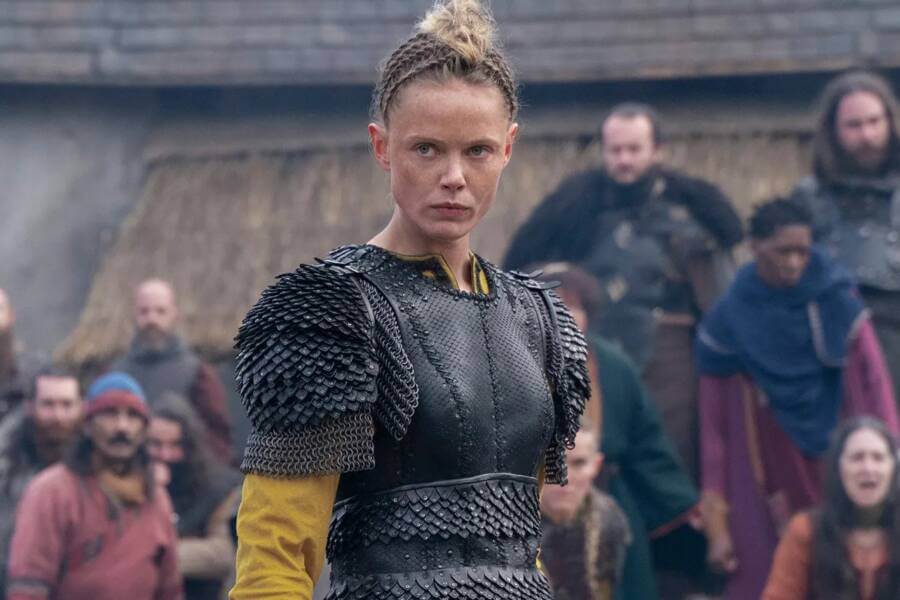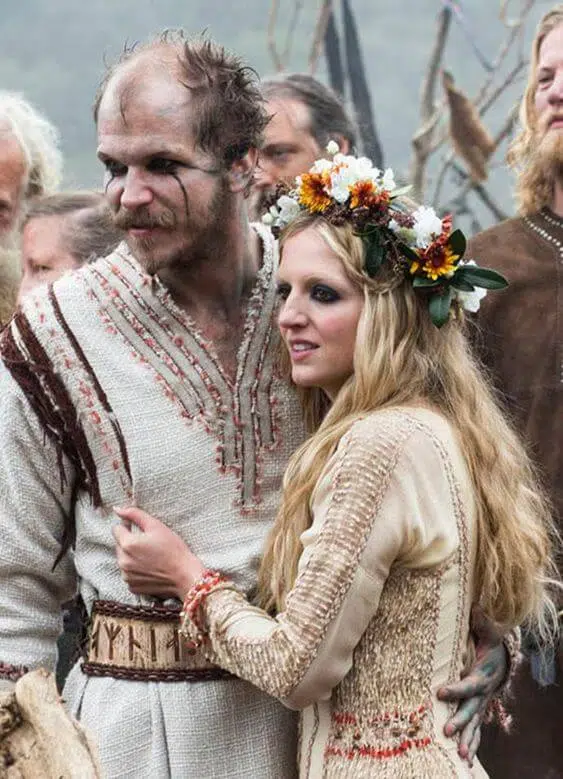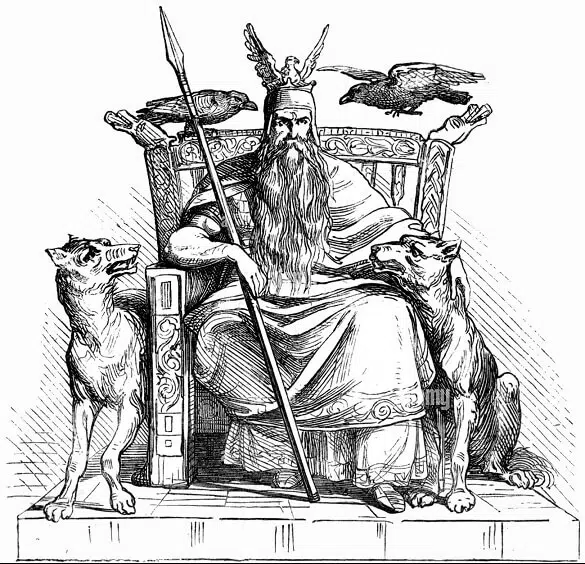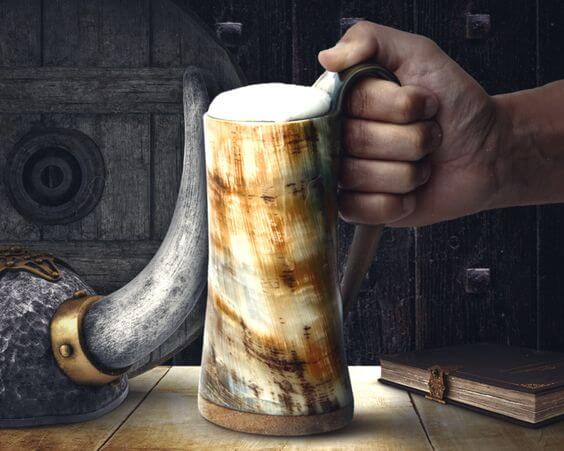The general public has a strange perception that Vikings were taller than other Europeans. Books, TV shows, and even some notable museum exhibits depict tall and powerful men with above-average strength, long hair and beard, and the ability to kill others. Most television shows nowadays depict Vikings as sword-wielding warriors with uncontrollable rage who sought battle and destruction wherever they went. Most of these depictions are inaccurate and lack a factual basis. For the sake of entertainment, the historical narrative is exaggerated and restructured to fit the criteria. Despite the fact that Scandinavian men and women were settlers, traders, and explorers, they are best known as pirates and raiders.
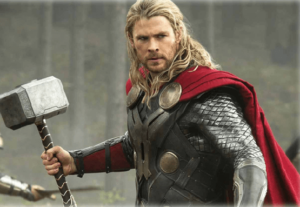
Are such depictions accurate? Fortunately for historians, the Vikings buried many of their dead in a way that preserved their bones, and we can now say with some confidence how tall they may have been through various osteoarcheological studies. But, is that really how the Vikings looked during the Viking Age? let’s have a look.
Were Vikings really tall?
The Viking period lasted from 793 to 1066 AD. The term ‘Viking’ derives from the old Norse word ‘Vik,’ which means ‘creek, inlet, or bay’ with a ‘ing’ suffix. However, the word’s etymology is highly debatable. Because the vocabulary of both Anglo-Saxon and Anglo-Fresian languages is similar, it is possible that the word originated in Anglo-Fresian rather than Nordic languages. The term may have been ingrained in the Scandinavian language.
Nothing is guaranteed, and nothing is likely to be written in stone, as with everything related to the Viking Age (both figuratively and literally). The evidence for how tall or short the Vikings were, can only be deduced from the evidence that we can find. Written sources on the subject are untrustworthy for two reasons: first, they were written by victims of Viking raids (clerics), who frequently embellished specific details; second, the most detailed written sources were written long after the event, and thus have little chance of being accurate. As a result, archaeological findings are the only reliable method for determining the average height of the vikings.
Since the beginning of Viking studies, historians and archaeologists have debated the issue of height. Part of the fascination with the subject stemmed from witness testimony in historical sources. According to the annals of Fulda, after a failed raid near Aachen, the Carolingian fighters marveled at the size of the slain Northmen’s bodies. The testimony of Ibn Fadlan, who observed the Rus, and Anskar s mission to Birka both alluded to the Vikings size. Ibn Fadlan described them as tall as date palms and with physiques that were never seen before among the Frankish. He also mentioned their height, which was up to 6 1/2 feet tall. The skeletal remains of Viking warriors have also been excavated and they confirm their large size.
In such an investigation, it is also important to note that geographic differences, variations in weather and harvest, as well as plagues, warfare, and a variety of other factors, can all affect a population’s height in a specific location at a specific time.
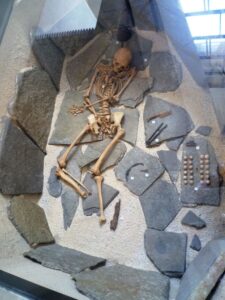
Viking’ Burial of a 30-year-old male from Orkney National Museum of Scotland
What was the average height of a Viking?
In 1958, Jon Steffanson according to a study, published an essay titled “Stature as a Criterion of the Nutritional Level of Viking Age Icelanders,” in which he compiled known data on the heights of men and women discovered in Viking graves. Iceland is an excellent location for such research because the people who settled on the island are broadly classified as Vikings.
Steffanson examined the bones of 86 people who lived and died in Iceland in the 10th century to summarize his recent findings (except for a select few skeletons that predate the others). He discovered that the average man stood between 172 and 176 cm tall at the time, and the average woman stood between 157 and 161 cm tall. When Steffanson compared these figures to those of 20th-century Icelanders, he discovered that the average height of both men and women had remained relatively constant. Icelanders only began to grow taller on average in the 1950s, which is similar to what we see in other European countries.
On average, Northmen in Sweden and Denmark appear to have been no taller or shorter than their Icelandic counterparts. Anders Winroth investigates the subject of heights in his latest book, The Age of the Vikings, not to answer the question of how tall the Vikings were, but to show how their heights changed as a criterion for how healthy and well-fed these communities were (similar to what Jon Steffensen had done for Icelanders in 1958). He delved into the matter by visiting the Fjälkinge cemetery in Sweden, where he wrote about the Viking Age skeletons:
“In the Fjälkinge grave field, adult males stood 160-185 centimeters tall, while women stood 151-171 centimeters tall.”
In terms of averages, their heights are comparable to those of Icelanders during the same time period. What’s more intriguing is that the Fjälkinge contains burials from generations before and after the Viking age. The average height of men and women in the Viking Age shows a small decrease in these tombs. It appears that Scandinavians were shorter during the Viking Age than before and after, based on this burial (and this site alone). These findings suggest that Vikings may have suffered from famine due to environmental conditions, for multiple generations, stunting their growth The results make perfect sense if the notion that climate change during that period generated food shortages that drove the Vikings to raid in the first place, is correct.
Similar research has been carried out in Denmark has established that the average height was only a few inches shorter than it is now. The average height for men was 170 cm while for women was 158 cm. Skeletons of humans exceeding 6 feet tall, on the other hand, were not uncommon. In beautifully equipped Viking tombs, like with the Anglo-Saxons, the remains were significantly taller than in inferior inhumations. This was attributed to dietary changes, but it might easily have been self-selection.
Richard Steckel of Ohio State University discovered in his essay Health and Nutrition in the Preindustrial Era: Insights from a Millennium of Average Heights in Northern Europe that Nordic people were no taller on average than people in other places at the time, including the British Isles and Mainland Europe. The data show that Viking Age Scandinavians had a slight height advantage over Anglo-Saxons, but the difference in heights can be explained by the sample sizes used, with the Anglo-Saxon sample being much larger than the Scandinavian sample.
It is worth noting that Scandinavia in that period, was a stratified society. Historian Neil Price recently proposed in a National Geographic article that Viking Age Scandinavian society was more like the plantation system in the Southern United States prior to the American Civil War than anything else.
“This was a slave economy,” Price explains. ” Slavery has received little attention in the last 30 years, but archaeological tools now can provide opportunities to change that.” The more prosperous and healthier members of the community would have grown taller than their servants and slaves due to the inequalities of Viking Age Scandinavian societies.
The Vikings had to import slaves to meet the demands of their farming system, so there was a lot of population mixing going on that could have affected heights.
Another point to consider is defining what the term Viking means, what it describes, and how this may influence how we interpret the findings. If we use the term Viking to refer to all Scandinavians from the Viking Age, the sources and evidence discussed above make sense and adequately answer our question. However, if we limit our definition of the term Viking to only those who left and roved foreign lands, the preceding discussion falls short in every way.
We have no choice but to rely on the evidence we have. Many factors determine a population’s height, and given the geographical dispersion of Viking Age Scandinavians and the time interval between the first and final Vikings, it’s difficult to state with certainty what their average height was. Archaeological evidence suggests that Vikings were neither slightly taller nor shorter than their southern neighbors.
Viking height in comparison with other Eras
A Romano-average Briton’s height would have been 5 feet 6½ (169 cm.) inches for men and 5 feet 2 inches (158cm.) for women. This is thought to be due to genetic factors rather than a nutritional deficiency. The average height of English inhabitants increased rapidly due to the influx of taller Germanic folk, but this appears to have declined following the Norman Conquest, primarily due to poorer nutrition. During the 12th-13th centuries, men in England had an average height of 5’6″ (167 cm), which improved to around 5’7″ (170cm) during the 13th-14th centuries.
During the 17th and 18th centuries, average male height fell again, reaching a low of 5 feet 5 inches, and did not begin to rise again until the early 19th century. This decline coincides with the so-called “industrial revolution,” most likely as a result of rapid population growth outstripping food supply, a sudden drop in the quality of diets for newly urbanized populations, and horrendous living conditions for factory workers. Increased economic inequality in early nineteenth-century England resulted in a staggering 8,12 inch (22cm) difference in average height between the upper and lower classes, whereas the height difference between an average Anglo-Saxon thegn and a peasant would have been a couple of inches at most. The typical Victorian worker stood only 5 ft 5 inches tall, due to a low protein diet and a toxic environment.
Would the Vikings be regarded as tall today?
The average Viking male is about 5’6″, which is slightly shorter than today’s average and even shorter than the average for Scandinavian men.
We may also say that, like in other European countries, Viking men and women were on average shorter than the people who live there today.
Shop Viking Jewelry
Are you passionate about Norse Culture or Norse Mythology?
Surflegacy is the final destination for the Modern-day Viking fan.
Finding the ideal piece of Viking Jewelry can be challenging, especially if you lack inspiration or don’t know where to look. We have a wide range of Viking Jewelry in various styles, shapes, colors, and materials, to accentuate your Viking spirit and look. Whatever you wear, you’ll find the ideal trendy piece to complement your wardrobe. Our jewelry is designed to be worn every day, no matter where you go or what season is.

